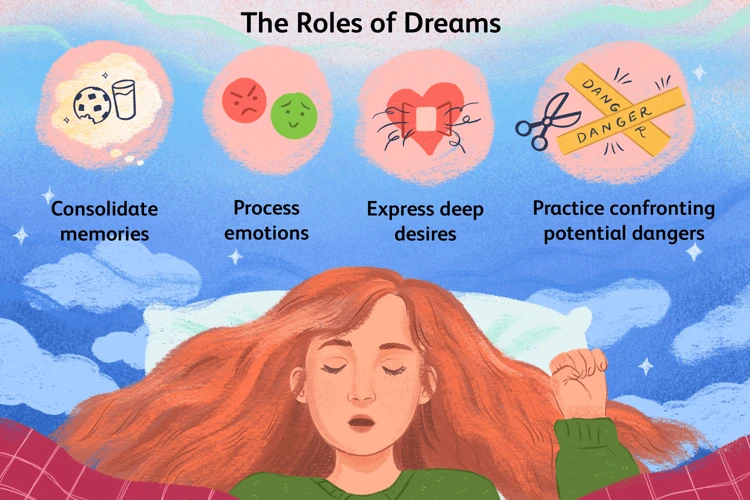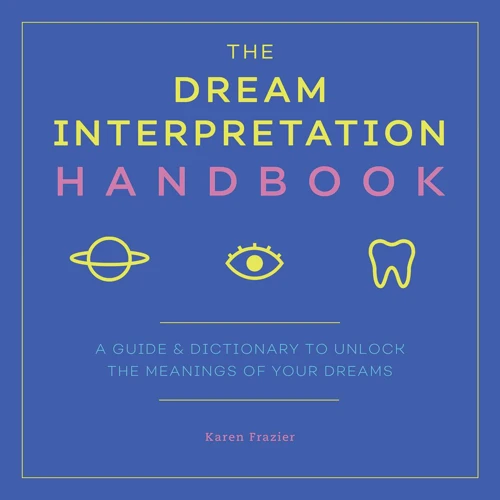Have you found yourself waking up from the same dream over and over again? Recurring dreams can be both fascinating and perplexing, as they often leave us questioning their significance. These dreams have long been a subject of curiosity and intrigue, leading experts to explore the connection between recurring dreams and unresolved issues. In this article, we will delve into this fascinating topic step-by-step, shedding light on the definitions and common themes of recurring dreams, delving into different theories of dream interpretation, examining how unresolved issues manifest in dreams, and exploring the benefits of analyzing these recurring dreams for self-discovery and personal growth. Join us on this journey as we unlock the secrets behind recurring dreams and uncover the potential for psychological healing and resolution.
Understanding Recurring Dreams

Recurring dreams can be a mysterious and enigmatic experience for many individuals. These dreams are characterized by their repetitive nature, often occurring over an extended period of time. Understanding the intricacies of recurring dreams is essential in unraveling their deeper meanings and implications. To comprehend recurring dreams fully, it is essential to grasp the definition and characteristics of these dreams. It is also crucial to explore the common themes that frequently appear in recurring dreams, as they can provide valuable insights into their significance and symbolism. By delving into these aspects, we can begin to unravel the complex tapestry of recurring dreams and gain a deeper understanding of their potential psychological and emotional significance.
Definition of recurring dreams
Recurring dreams are a type of dream that repeats itself with remarkable consistency. Unlike other dreams that we may experience sporadically, recurring dreams occur repeatedly over a period of time, often months or even years. These dreams can portray similar scenarios, characters, or themes, leading the dreamer to recognize a sense of familiarity and repetition. The defining characteristic of recurring dreams is their persistent nature, causing them to leave a lasting impression on the dreamer’s psyche. It’s important to note that recurring dreams are not fleeting or isolated occurrences, but rather recurring patterns in the dreamer’s subconscious mind. They can vary in their intensity and frequency, with some individuals experiencing them frequently while others encounter them less often. In order to fully comprehend the significance of recurring dreams, it is crucial to delve into their recurring patterns and explore their unique symbolism and meanings. By unraveling the patterns and symbolism present in recurring dreams, individuals can gain valuable insights into their own subconscious mind and potentially uncover unresolved psychological issues or hidden desires that continue to manifest through these repetitive dreams. For further understanding, one can explore the common themes in recurring dreams and the psychological implications associated with them. Additionally, unlocking the meaning of recurring dreams can provide individuals with a deeper understanding of their own inner world and facilitate personal growth and self-discovery.
Common themes in recurring dreams
Common themes in recurring dreams can act as windows into our subconscious minds, revealing patterns and unresolved issues that we may not be fully aware of in our waking lives. These recurring themes often transcend cultural and individual boundaries, resonating with people from various backgrounds. Here are some common themes that frequently appear in recurring dreams:
1. Falling: Many individuals experience recurring dreams of falling. These dreams can evoke feelings of vulnerability, lack of control, or uncertainty. They may stem from a sense of insecurity or fear of failure in waking life.
2. Being chased: Dreams in which we are pursued or chased by an unidentified figure or entity are also common. These dreams often signify the need to confront and overcome obstacles or unresolved issues that we may have been avoiding.
3. Being naked in public: Dreams of being naked or inadequately dressed in public settings can highlight feelings of vulnerability, exposure, or a fear of judgment. They may reflect insecurities about our appearance, performance, or social standing.
4. Teeth falling out: Dreams about losing teeth can be unsettling, and they often symbolize feelings of powerlessness, insecurity, or a fear of aging. These dreams may be associated with concerns about our physical appearance, communication skills, or loss of control in certain aspects of life.
5. Unprepared for an exam: Many people experience recurring dreams of being unprepared for an exam or important event. These dreams can reflect underlying anxiety about performance, preparedness, or fear of failure in different areas of life.
6. Being trapped or unable to move: Recurring dreams of being trapped, paralyzed, or unable to move can represent feeling stuck, powerless, or restricted in certain situations. They may indicate a need for change, assertiveness, or a desire for more freedom and autonomy.
7. Revisiting a specific place: Some individuals have recurring dreams of returning to a particular setting, such as a childhood home or a significant location from their past. These dreams often signify unresolved emotions, memories, or unfinished business associated with those places.
It’s important to note that these themes are not exhaustive, and individuals may experience other recurring dream themes that are unique to their personal experiences and circumstances. Exploring the underlying meanings and emotions associated with these recurring themes can provide valuable insights into unresolved issues and help facilitate personal growth and healing. To gain a deeper understanding of the specific meanings behind recurring dreams, it can be helpful to analyze the context, emotions, and any significant events or symbols present in the dreams.
Theories on Dream Interpretation

Dream interpretation has fascinated scholars and psychologists for centuries, leading to the development of various theories. One prominent theory is Freud’s interpretation, which suggests that dreams serve as a pathway to the unconscious mind and contain hidden desires, conflicts, and memories. According to Freud, analyzing the symbols and themes within dreams can reveal repressed thoughts and unresolved issues. Another influential theory is Carl Jung’s collective unconscious theory, which posits that dreams connect individuals to a collective pool of archetypes and universal symbols. Jung believed that recurring dreams often point to unresolved psychological conflicts that need attention and integration. These theories provide different lenses through which to understand and interpret dreams, offering valuable insights into the complexities of the human mind and the potential meanings behind our dreams.
Freudian interpretation
Sigmund Freud, the renowned psychoanalyst, contributed significantly to the field of dream interpretation with his groundbreaking theories. His interpretation of dreams, including recurring dreams, focused on the unconscious mind and the hidden meanings behind dream imagery. In , dreams are seen as a reflection of repressed desires, unresolved conflicts, and unconscious thoughts and emotions. According to Freud, recurring dreams could indicate unresolved psychological issues that continue to affect an individual’s waking life. He believed that by analyzing the symbols and content of these dreams, one could gain insight into their hidden desires and gain a better understanding of their true selves. Freud’s emphasis on the interpretation of dream symbolism, such as phallic symbols representing sexual desires or objects representing repressed memories, has had a profound impact on the field of dream analysis. While Freudian interpretation may not be universally accepted today, it remains an influential perspective in understanding the connection between recurring dreams and unresolved psychological issues. Understanding Freud’s theories can provide valuable insights into the potential psychological significance and hidden meanings behind recurring dreams.
Carl Jung’s collective unconscious theory
Carl Jung’s collective unconscious theory is a concept that delves into the depths of the human psyche, proposing that there is a shared reservoir of knowledge and experiences that all individuals inherit. According to Jung, this collective unconscious is composed of archetypes, universal symbols and themes that are innate within us. When it comes to recurring dreams, Jung believed that they were an expression of these archetypes emerging from the collective unconscious. These recurring dreams were seen as messages from the unconscious mind, attempting to bring attention to unresolved psychological conflicts or unacknowledged aspects of ourselves. Jung’s theory suggests that by analyzing the symbolism and recurring themes in our dreams, we can gain insights into our deepest fears, desires, and unresolved issues. This approach emphasizes the importance of interpreting recurring dreams in the context of the collective unconscious and the broader human experience. By engaging with Carl Jung’s collective unconscious theory, we can open up a rich and profound exploration of the hidden realms of our dreams and uncover a deeper understanding of ourselves.
Unresolved Issues and Dreams

Dreams have long been recognized as a window into our subconscious mind, offering glimpses into our deepest thoughts and emotions. When it comes to recurring dreams, they often serve as a manifestation of unresolved issues that linger within us. These unresolved issues can stem from various aspects of our lives, such as past traumas, unaddressed conflicts, or unfulfilled desires. Through dreams, our mind attempts to process and make sense of these unresolved issues, often presenting them to us in symbolic and metaphorical ways. The dreams provide an avenue for our unconscious mind to bring attention to these lingering matters, beckoning us to acknowledge, confront, and ultimately resolve them. By exploring the connection between unresolved issues and dreams, we can gain valuable insights into our inner world and embark on a path of healing and self-discovery.
How unresolved issues manifest in dreams
Unresolved issues have a way of manifesting themselves in our dreams, providing a unique window into our subconscious mind. can vary from person to person, but there are some common ways in which these issues make themselves known. One way is through the repetition of certain symbols or scenarios in our dreams. For example, if someone has unresolved relationship issues, they might have recurring dreams involving conflicts or encounters with the people involved. These dreams act as a reflection of the unresolved emotions and thoughts surrounding the issue. Another way unresolved issues manifest in dreams is through intense emotions. Dreams can be a conduit for repressed feelings, allowing them to surface and be expressed in a safe environment. This can be particularly true for traumatic experiences or past events that have not been fully processed or resolved. These dreams may be filled with fear, sadness, anger, or anxiety, giving us an opportunity to confront and work through these unresolved emotions. Additionally, unresolved issues can manifest in dreams through metaphors or symbolic imagery. The subconscious mind often uses symbols to represent deeper meanings. For instance, if someone is struggling with feelings of restriction or being trapped in their life, they might dream of being trapped in a maze or unable to escape a confined space. These symbolic representations can provide clues about the unresolved issues that need attention and resolution. By paying attention to these manifestations in our dreams, we can gain valuable insights into the unresolved issues that may be affecting our waking lives, and take steps towards healing and resolution.
Why unresolved issues become recurring dreams
Unresolved issues can manifest and persist in our dreams, becoming recurring dreams with a purpose. can be attributed to several psychological factors and mechanisms. One reason is that dreams serve as a way for our subconscious mind to process and work through unresolved emotions, conflicts, and traumas. When we have unresolved issues in our waking life, they can linger in our subconscious and resurface during sleep. Through recurring dreams, our mind attempts to bring these unresolved issues to our conscious awareness, urging us to address and resolve them. These dreams act as a gentle nudge, reminding us that there are unresolved matters that require our attention and healing. Additionally, recurring dreams provide an opportunity for us to explore different perspectives and solutions to these lingering problems. They offer a safe space where we can delve deeper into our emotions, fears, and desires, allowing for self-reflection and self-discovery. By examining the recurring themes and symbols in these dreams, we can gain valuable insights into the root causes of our unresolved issues and find the path towards healing and resolution. Embracing and engaging with these recurring dreams can lead to profound personal growth and pave the way for positive transformation in our waking lives.
Benefits of Analyzing Recurring Dreams

Analyzing recurring dreams can offer a plethora of benefits for individuals seeking personal growth and self-discovery. Exploring the benefits of diving into these dreams can shed light on unresolved issues, providing an opportunity to identify and resolve underlying emotional and psychological challenges. One of the primary advantages of analyzing recurring dreams is the potential for self-discovery. These dreams often contain hidden messages and symbols that can reveal aspects of our subconscious mind that are not readily accessible during waking hours. By examining recurring dreams, individuals can gain a deeper understanding of their fears, desires, and unresolved conflicts. Studying these dreams can serve as a powerful tool for identifying and addressing unresolved issues. The recurring nature of these dreams signifies that there are unresolved emotions or experiences that continue to impact our well-being. By carefully analyzing these dreams, we can bring these unresolved issues to the surface, allowing for healing, growth, and the potential for a more fulfilling life. Whether through keeping a dream journal or seeking professional help, the methods for analyzing recurring dreams can equip individuals with the necessary tools to delve into their subconscious and unlock the transformative power of these dreams.
Self-discovery and personal growth
Engaging in the analysis of recurring dreams can lead to profound self-discovery and personal growth. These dreams often serve as a window into our subconscious, allowing us to explore aspects of ourselves that may be hidden or overlooked in our waking lives. Through the exploration of recurring dreams, we can uncover deeper layers of our psyche, gaining insights into unresolved emotions, fears, desires, and challenges. This process of self-discovery can provide a valuable opportunity for introspection, reflection, and self-awareness. As we journey through the symbols and narratives presented in these dreams, we may gain a greater understanding of our own strengths, weaknesses, and inner conflicts. This newfound self-awareness can empower us to make positive changes in our lives, leading to personal growth and transformation. By recognizing patterns, themes, and recurring symbols in our dreams, we can explore the underlying issues that may be holding us back or causing emotional turmoil. This process allows us to confront and address these issues, ultimately leading to personal healing and growth. The exploration of recurring dreams opens the door to a deeper understanding of ourselves and can serve as a powerful tool for self-discovery and personal development.
Identifying and resolving underlying issues
is one of the key benefits of analyzing recurring dreams. Through careful examination and interpretation of these dreams, individuals can gain valuable insights into their subconscious thoughts, emotions, and experiences. Recurring dreams often serve as a reflection of unresolved issues that may be lingering in the individual’s waking life. By paying attention to the recurring themes, symbols, and emotions present in these dreams, individuals can begin to unravel the root causes of their inner conflicts. Once the underlying issues are identified, steps can be taken to address and resolve them. This process may involve self-reflection, introspection, and seeking guidance from professionals such as therapists or counselors. By actively working towards resolving these underlying issues, individuals can experience a sense of healing, personal growth, and emotional well-being. It is important to remember that each individual’s experience and interpretation of recurring dreams may vary, and it may take time and patience to fully unlock the deeper meanings they hold. However, the rewards of identifying and resolving these underlying issues can be transformative, leading to a greater sense of self-awareness, clarity, and inner peace.
Methods for Analyzing Recurring Dreams

When it comes to analyzing recurring dreams, there are several effective methods that can be employed for deeper insight and interpretation. One such method is keeping a dream journal. By recording the details of each recurring dream, including emotions, symbols, and any personal connections, patterns may begin to emerge, providing valuable clues for interpretation. Another option is seeking professional help from a therapist or dream analyst who specializes in dream interpretation. These professionals can offer expert guidance and facilitate a deeper exploration of recurring dreams. Additionally, engaging in self-reflection and meditation can help unlock the hidden meanings behind these dreams. Exploring recurring dreams through these various methods can lead to a greater understanding of oneself and provide the opportunity for personal growth and resolution.
Keeping a dream journal
Keeping a dream journal is a powerful and practical method for analyzing recurring dreams and gaining insight into their hidden meanings. To begin, find a dedicated notebook or use a digital platform to record your dreams immediately upon waking. By recording your dreams in a journal, you can establish a clear and organized record of your experiences, allowing you to detect patterns and themes that may emerge over time. When documenting your dreams, be sure to include specific details such as the people, places, and emotions present in the dream. It is also helpful to note any recurring symbols or motifs that appear across different dreams. By consistently writing in your dream journal, you create a habit that enhances your dream recall and increases the likelihood of capturing the subtle nuances and connections within your dreams. To further enhance the effectiveness of your dream journal, consider adding sketches or drawings that represent key elements of your dreams. By visually capturing these elements, you can tap into your subconscious and unlock additional layers of meaning. Finally, regularly reviewing and reflecting on your dream journal entries allows you to identify recurring patterns, symbols, or unresolved issues that may be manifested in your dreams. This practice can provide valuable insights for personal growth and self-discovery, empowering you to address and resolve any unresolved issues that may be influencing your recurring dreams.
Seeking professional help
can be a valuable step in analyzing and understanding recurring dreams. Consulting with a qualified therapist or psychologist who specializes in dream analysis can provide a deeper level of insight and interpretation. These professionals have a wealth of knowledge and experience in understanding the complexities of the unconscious mind and can offer objective perspectives on the recurring themes and symbols present in your dreams. Through therapy sessions, they can guide you in exploring the underlying emotions and unresolved issues that may be manifesting in your dreams, helping you gain a better understanding of their significance. Additionally, a therapist can provide you with tools and techniques to actively engage with your dreams and interpret their meanings on your own. They may suggest exercises such as creative visualization, journaling, or even dream reenactment to further explore and unlock the messages embedded in your recurring dreams. Seeking professional help can be a transformative and empowering experience, allowing you to delve into the depths of your dreams and gain valuable insights into your subconscious mind.
Case Studies and Examples

Case studies and examples offer real-life illustrations of the connection between recurring dreams and unresolved issues. These accounts provide valuable insights into the experiences of individuals who have grappled with recurring dreams and the underlying unresolved issues they represent. In the first case study, we explore the relationship between anxiety dreams and unresolved trauma. This example sheds light on how recurring dreams can serve as manifestations of past traumatic experiences that have not been properly addressed or healed. The second case study focuses on dreams of failure and low self-esteem, revealing how recurring dreams can symbolize deep-seated insecurities and feelings of inadequacy. By examining these case studies, we gain a deeper understanding of the profound impact that unresolved issues can have on our dreamscapes and overall well-being. Through these real-life examples, we uncover the importance of addressing and resolving these underlying issues to promote psychological healing and growth.
Case study 1: Anxiety dreams and unresolved trauma
Case Study 1: Anxiety Dreams and Unresolved Trauma
In this case study, we will examine the intriguing connection between anxiety dreams and unresolved trauma. Anxiety dreams, characterized by feelings of fear, stress, and unease, often serve as a manifestation of underlying emotional turmoil related to past traumatic experiences. The dreamer, let’s call her Sarah, experienced recurring nightmares where she was being chased by an unknown assailant, resulting in an overwhelming sense of fear and helplessness.
Upon further exploration through therapy and dream analysis, it became evident that Sarah’s anxiety dreams were directly linked to a deeply rooted unresolved trauma from her childhood. Through the dreamwork process, Sarah discovered that the recurring chase in her dreams mirrored an actual traumatic event she experienced as a young child. This realization allowed her to connect her anxiety dreams to the unresolved trauma she had suppressed for years.
By dissecting the symbolism and emotions within her recurring dreams, Sarah was able to confront the unresolved trauma head-on. With the help of a therapist, Sarah engaged in trauma-focused therapy, allowing her to heal from the past and find closure. As she worked through her emotions and gradually processed the trauma, Sarah noticed a significant decrease in the frequency and intensity of her anxiety dreams.
This case study highlights the significance of understanding and analyzing recurring dreams, particularly when they are related to unresolved trauma. Through introspection and professional support, individuals can gain insight into their anxiety dreams, enabling them to address underlying issues and embark on a healing journey towards resolution and emotional well-being.
Case study 2: Dreams of failure and low self-esteem
In , we explore the fascinating connection between recurring dreams and feelings of inadequacy. This case study focuses specifically on individuals who experience dreams associated with failure and a pervasive sense of low self-esteem. These dreams often involve scenarios where the dreamer finds themselves in situations where they are constantly underperforming or being criticized by others. The recurring nature of these dreams suggests that there are underlying unresolved issues related to the dreamer’s self-worth and confidence. The dreams may stem from past experiences of failure or instances where the individual felt inadequate or rejected. By analyzing these recurring dreams in detail, individuals can gain valuable insights into their internal fears and negative self-perceptions. This understanding can empower them to address these unresolved issues and work towards building a healthier sense of self-esteem. It highlights the significance of dream analysis in uncovering deep-seated emotions and fostering personal growth and development.
Recurring Dreams and Psychological Healing
Recurring dreams have the potential to serve as a powerful tool for psychological healing and growth. These dreams can provide valuable insights into our unresolved issues and traumas, offering a pathway towards integration and closure. By utilizing recurring dreams as a therapeutic tool, individuals can embark on a journey of self-discovery and healing. These dreams act as a mirror, reflecting the deeper layers of our psyche and allowing us to confront and process unresolved emotions and experiences. Through dreamwork, we can unravel the symbolic messages hidden within our recurring dreams, gaining a clearer understanding of ourselves and our inner struggles. This process of exploration and introspection enables us to integrate past wounds, cultivate self-awareness, and ultimately facilitate psychological healing and growth.
Using recurring dreams as a therapeutic tool
Using recurring dreams as a therapeutic tool holds immense potential for self-discovery and personal growth. It allows individuals to delve deeper into their subconscious mind, uncovering hidden emotions and unresolved issues that may be affecting their daily lives. By examining the patterns and symbols within these dreams, individuals can gain valuable insights into their psychological and emotional state. Therapists often employ various techniques to facilitate the interpretation and analysis of recurring dreams, such as dream analysis, guided imagery, and journaling. Through these therapeutic methods, individuals can explore the underlying meanings and messages of their dreams, leading to a greater understanding of themselves and their experiences. This process can be empowering, as it allows individuals to confront and resolve unresolved issues, gain clarity, and make positive changes in their lives. Using recurring dreams as a therapeutic tool not only provides a platform for personal growth but also facilitates healing and transformation on a deeper level. It is a means for individuals to connect with their inner selves and attain a sense of wholeness and well-being.
Integration and closure through dreamwork
Dreamwork, as a therapeutic approach, offers a powerful method for integrating and finding closure with recurring dreams. Through dream analysis and exploration, individuals can gain a deeper understanding of the unresolved issues and emotions that these dreams represent. By actively engaging with the imagery, symbols, and narratives presented in recurring dreams, individuals can uncover hidden meanings and insights that may have eluded them in their waking life.
One effective technique in dreamwork is journaling. Keeping a dream journal allows individuals to record and reflect upon their recurring dreams, providing a valuable tool for analysis. Writing down dreams in detail helps to capture the nuances and emotions associated with them, enabling individuals to revisit and reflect on them later. This process helps to bridge the gap between the unconscious mind and conscious awareness, allowing for a deeper exploration of the underlying issues at play.
Another method commonly used in dreamwork is guided imagery or visualization. This technique involves revisiting recurring dreams in a meditative or relaxed state, allowing individuals to engage with the dream imagery in a safe and controlled environment. By visualizing themselves within the dream and actively altering the outcome or engaging with the dream characters, individuals can gain a sense of empowerment and control over their recurring dreams. This process can lead to a deeper understanding of the unresolved issues and a sense of closure and resolution.
Additionally, seeking the guidance of a qualified professional, such as a therapist or psychologist specializing in dreamwork, can provide valuable support and expertise in analyzing recurring dreams. These professionals can help individuals uncover patterns, symbols, and themes within their dreams, offering interpretations and insights that may not be immediately apparent. Working with a trained professional can facilitate the integration and closure process, guiding individuals towards self-discovery and emotional healing.
Dreamwork offers a transformative approach to finding integration and closure with recurring dreams. By actively engaging with these dreams through journaling, guided imagery, and professional guidance, individuals can navigate the intricate landscape of their dreams, uncovering the unresolved issues that lie beneath. This process opens the door to self-discovery, emotional healing, and a newfound sense of closure and resolution.
Conclusion
In conclusion, exploring the connection between recurring dreams and unresolved issues can provide valuable insights into our subconscious and pave the way for personal growth and healing. Throughout this article, we have delved into various aspects of recurring dreams, including their definition, common themes, and theories of interpretation. We have discussed how unresolved issues manifest in dreams and why they can become recurring. By analyzing and interpreting our recurring dreams, we can embark on a journey of self-discovery, identifying and resolving underlying issues that may be impacting our waking lives. Keeping a dream journal or seeking professional help are effective methods for unraveling the deeper meanings of these dreams. We have also explored case studies that highlight the diverse ways in which recurrent dreams can connect to unresolved trauma or low self-esteem. Additionally, we have discussed how recurring dreams can be used as a therapeutic tool and aid in psychological healing. By actively engaging with our recurring dreams, we can attain a sense of integration and closure, promoting overall well-being and personal transformation. So, the next time you have a recurring dream, embrace the opportunity to explore and understand its significance. Remember, your dreams could hold the key to unlocking unresolved issues and provide a path towards growth and healing.
Frequently Asked Questions
What are recurring dreams?
Recurring dreams are dreams that repeat themselves over an extended period of time. Unlike regular dreams that we may not remember, recurring dreams leave a lasting impression as they recur with similar themes, symbols, or narratives.
Do recurring dreams have specific meanings?
The specific meanings of recurring dreams can vary from person to person. However, they often symbolize unresolved issues, emotions, or experiences that the dreamer has yet to confront or process.
What are some common themes in recurring dreams?
Common themes in recurring dreams include falling, being chased, being naked in public, and failing an exam. These themes often reflect feelings of vulnerability, anxiety, or fear that may stem from unresolved issues in the dreamer’s life.
Can recurring dreams be a sign of unresolved trauma?
Yes, recurring dreams can indeed be a sign of unresolved trauma. They may serve as a subconscious way for the mind to process and heal from traumatic experiences that have not been fully addressed or resolved.
Are recurring dreams always negative?
Recurring dreams can be both negative and positive in nature. While some may elicit feelings of anxiety or fear, others may carry positive messages or signify personal growth and transformation.
Can analyzing recurring dreams help in personal development?
Absolutely! Analyzing recurring dreams can provide valuable insights into one’s subconscious mind, allowing for self-discovery and personal growth. They can help individuals identify and address unresolved issues, leading to enhanced self-awareness and emotional well-being.
Should I keep a dream journal to analyze recurring dreams?
Yes, keeping a dream journal is an excellent practice for analyzing recurring dreams. Writing down details and emotions associated with these dreams can provide a record for future analysis, helping to identify patterns and themes that may offer valuable insights.
When should I consider seeking professional help for recurring dreams?
If recurring dreams cause significant distress, interfere with daily functioning, or if the underlying issues seem too complex to resolve independently, it may be beneficial to seek professional help from a therapist or dream analyst who specializes in dream interpretation.
Can recurring dreams be resolved or stopped?
Yes, recurring dreams can be resolved or stopped. By understanding and addressing the underlying issues or emotions they represent, individuals can work towards achieving closure and resolution, potentially leading to a decrease or complete cessation of recurring dreams.
Is it possible to integrate recurring dreams into a therapeutic process?
Absolutely! Recurring dreams can be valuable tools in therapy. Therapists often use recurring dreams as a means to explore and uncover deeper aspects of a client’s psyche, facilitating the healing process and promoting personal development.








